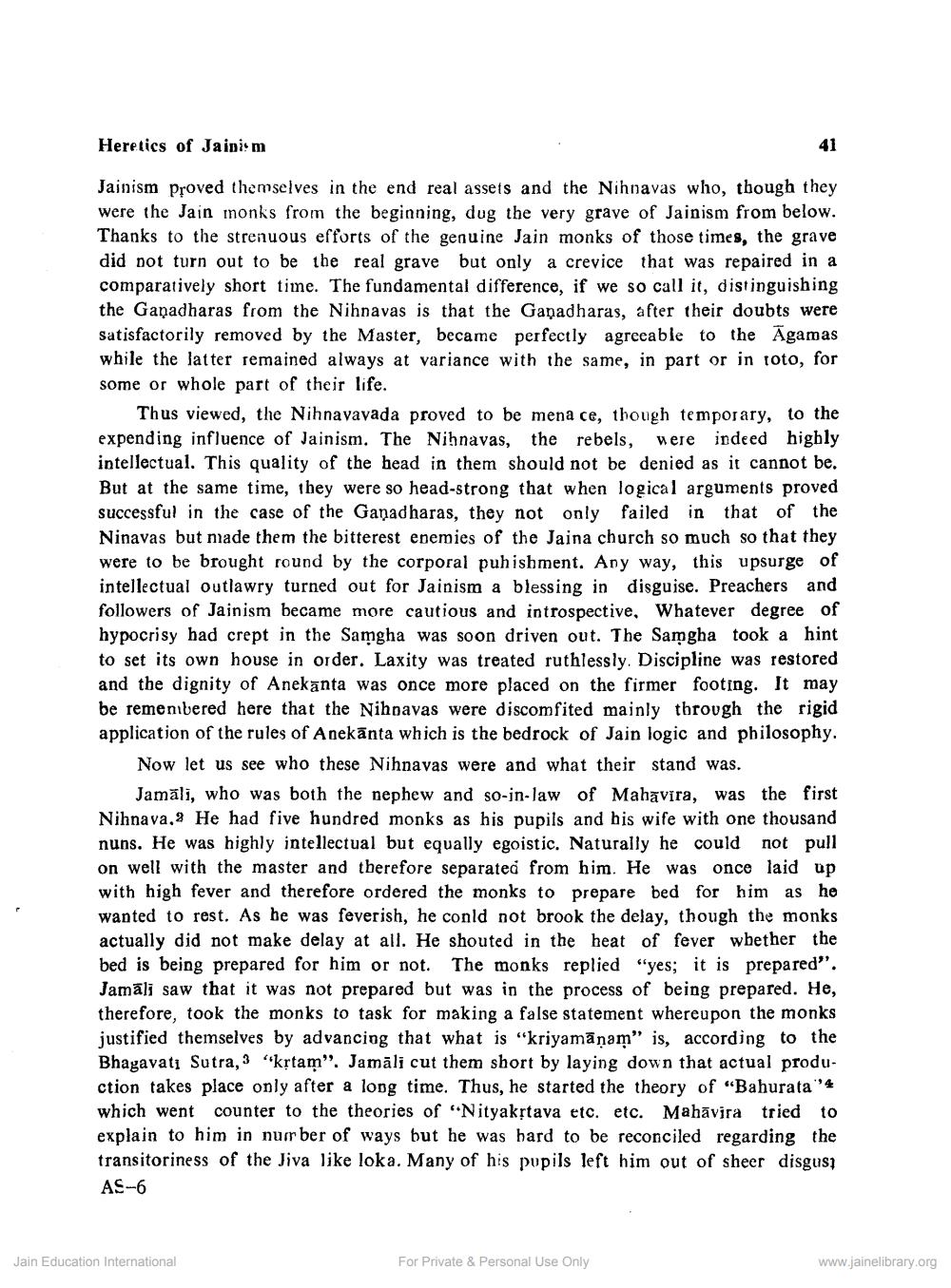________________
Heretics of Jainism
41
Jainism proved themselves in the end real assets and the Nihnavas who, though they were the Jain monks from the beginning, dug the very grave of Jainism from below. Thanks to the strenuous efforts of the genuine Jain monks of those times, the grave did not turn out to be the real grave but only a crevice that was repaired in a comparatively short time. The fundamental difference, if we so call it, distinguishing the Ganadharas from the Nihnavas is that the Ganadharas, after their doubts were satisfactorily removed by the Master, became perfectly agreeable to the Āgamas while the latter remained always at variance with the same, in part or in toto, for some or whole part of their life.
Thus viewed, the Nihnavavada proved to be mena ce, though temposary, to the expending influence of Jainism. The Nihnavas, the rebels, were indeed highly intellectual. This quality of the head in them should not be denied as it cannot be. But at the same time, they were so head-strong that when logical arguments proved successful in the case of the Ganad haras, they not only failed in that of the Ninavas but made them the bitterest enemies of the Jaina church so much so that they were to be brought round by the corporal puhishment. Any way, this upsurge of intellectual outlawry turned out for Jainism a blessing in disguise. Preachers and followers of Jainism became more cautious and introspective. Whatever degree of hypocrisy had crept in the Samgha was soon driven out. The Samgha took a hint to set its own house in order. Laxity was treated ruthlessly. Discipline was restored and the dignity of Anekanta was once more placed on the firmer footing. It may be remenbered here that the Nihpavas were discomfited mainly through the rigid application of the rules of Anekānta which is the bedrock of Jain logic and philosophy.
Now let us see who these Nihnavas were and what their stand was.
Jamāli, who was both the nephew and so-in-law of Mahavira, was the first Nihnava, He had five hundred monks as his pupils and his wife with one thousand nuns. He was highly intellectual but equally egoistic. Naturally he could not pull on well with the master and therefore separated from him. He was once laid up with high fever and therefore ordered the monks to prepare bed for him as he wanted to rest. As he was feverish, he conld not brook the delay, though the monks actually did not make delay at all. He shouted in the heat of fever whether the bed is being prepared for him or not. The monks replied “yes; it is prepared". Jamāli saw that it was not prepared but was in the process of being prepared. He, therefore, took the monks to task for making a false statement whereupon the monks justified themselves by advancing that what is "kriyamāņam” is, according to the Bhagavatı Sutra, 3 "krtam". Jamāli cut them short by laying down that actual production takes place only after a long time. Thus, he started the theory of "Bahurata"'4 which went counter to the theories of "Nityakstava etc. etc. Mahāvira tried to explain to him in nurr ber of ways but he was hard to be reconciled regarding the transitoriness of the Jiva like loka. Many of his pupils left him out of sheer disgusi AS-6
Jain Education International
For Private & Personal Use Only
www.jainelibrary.org




